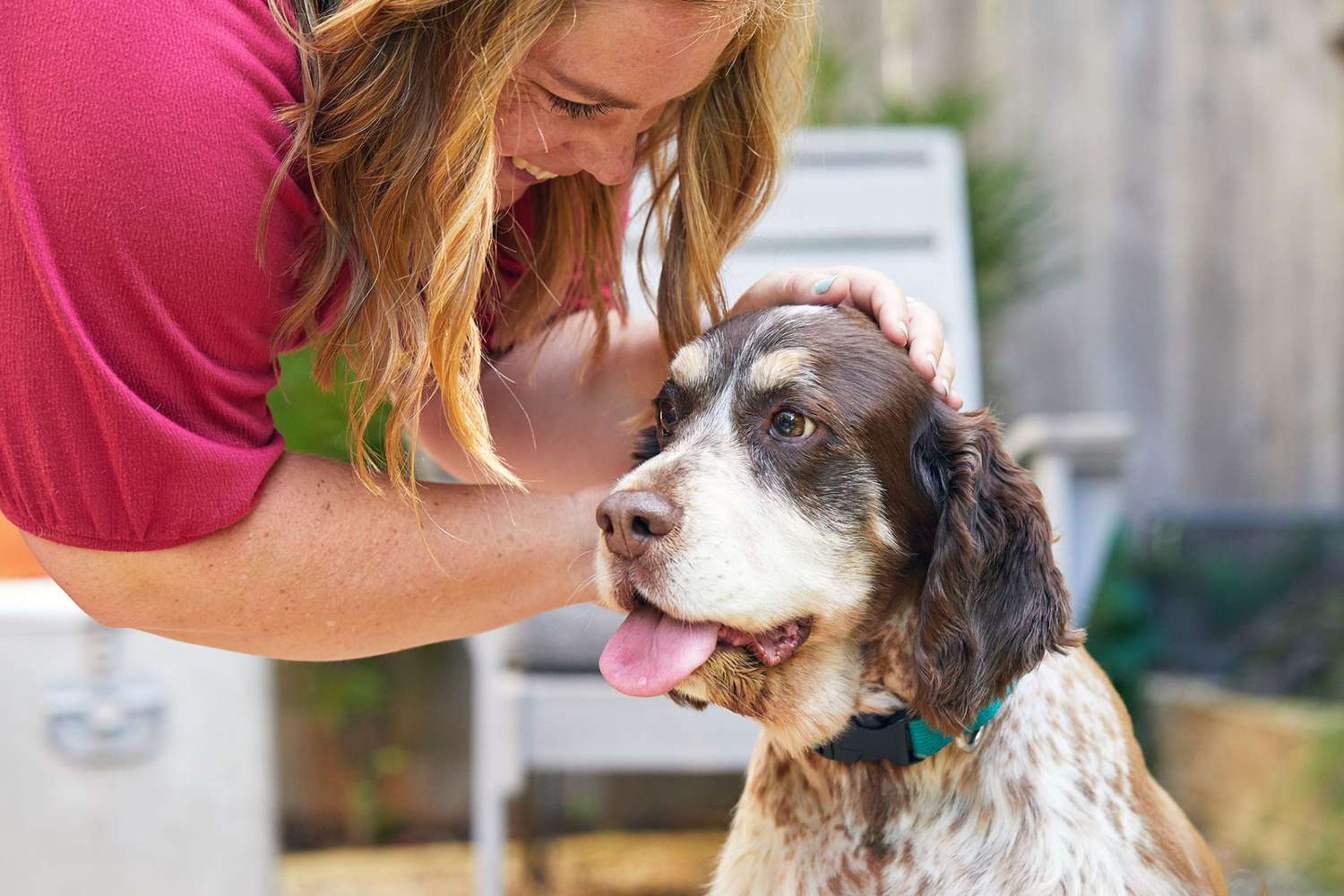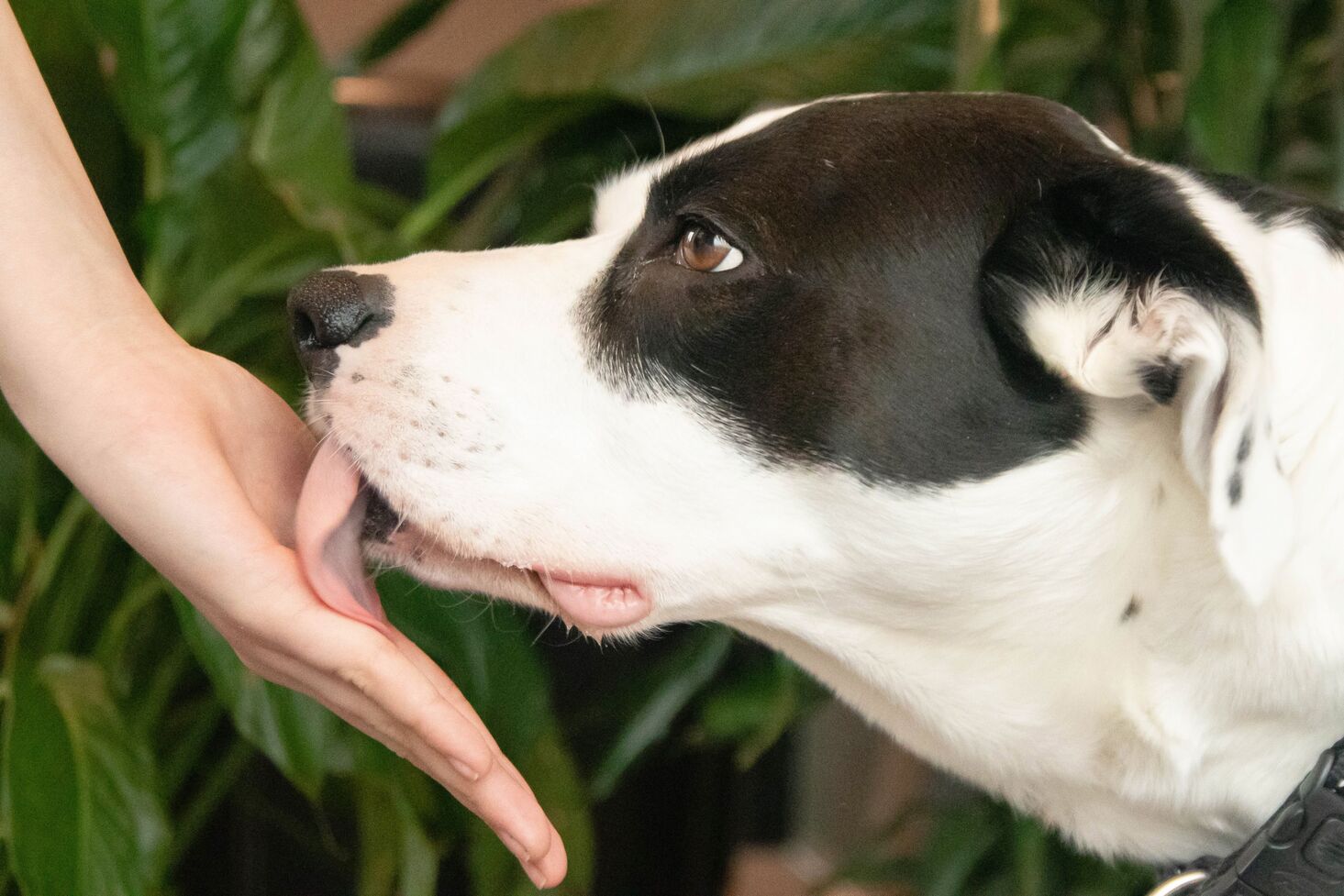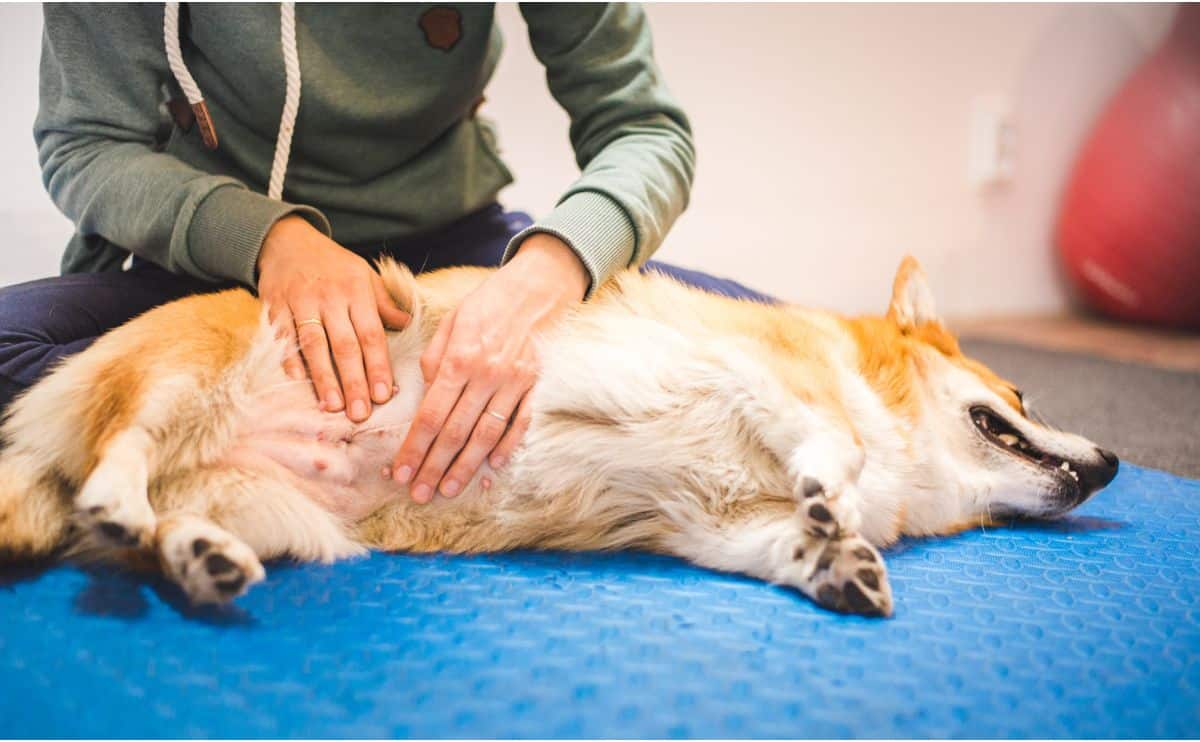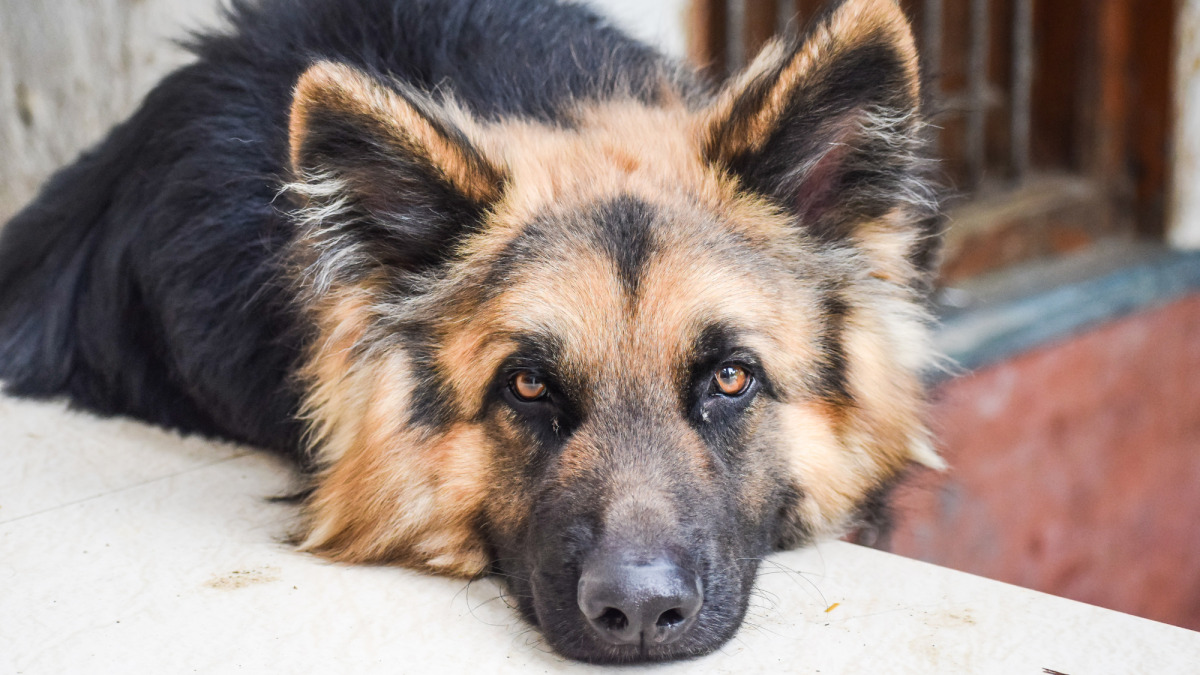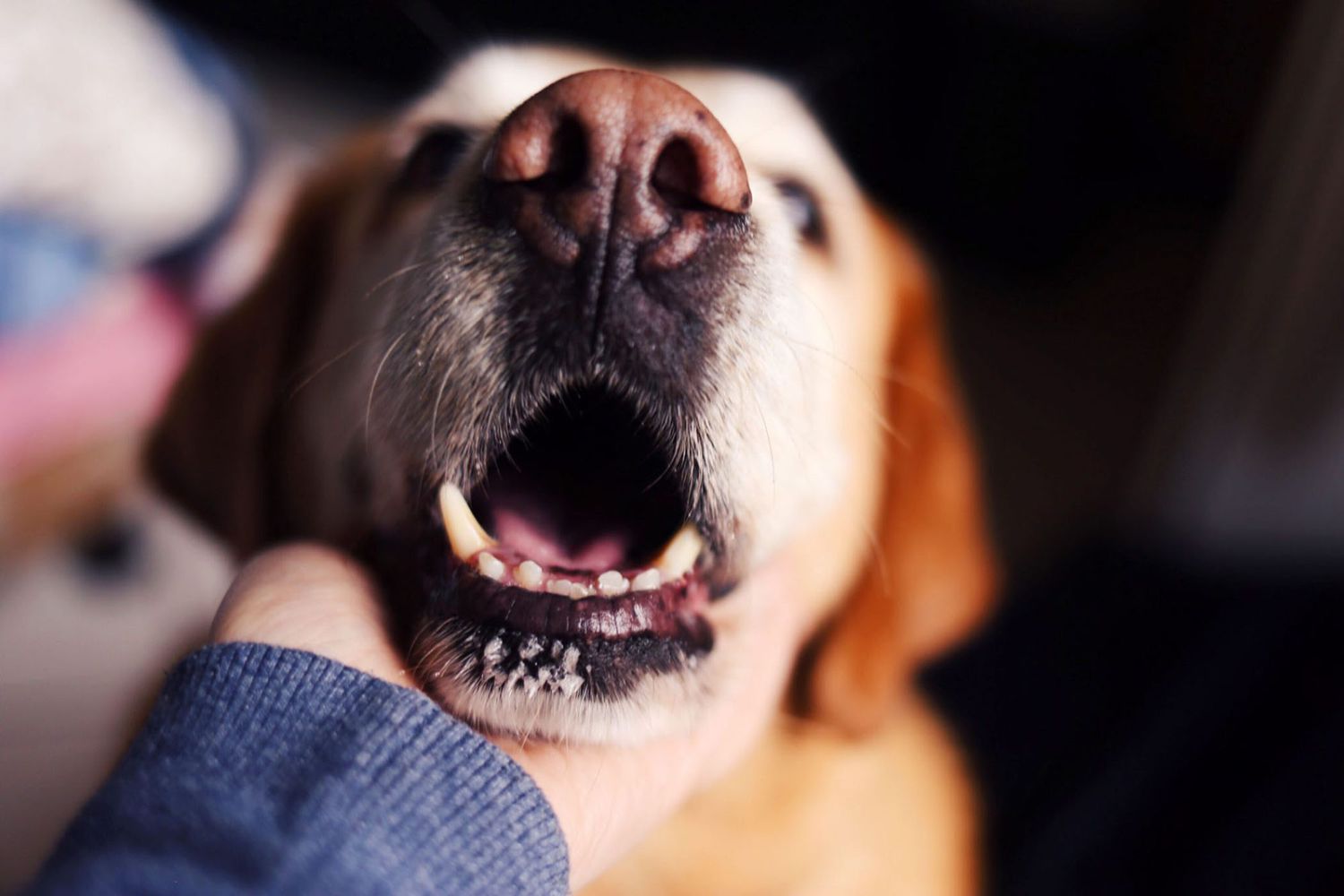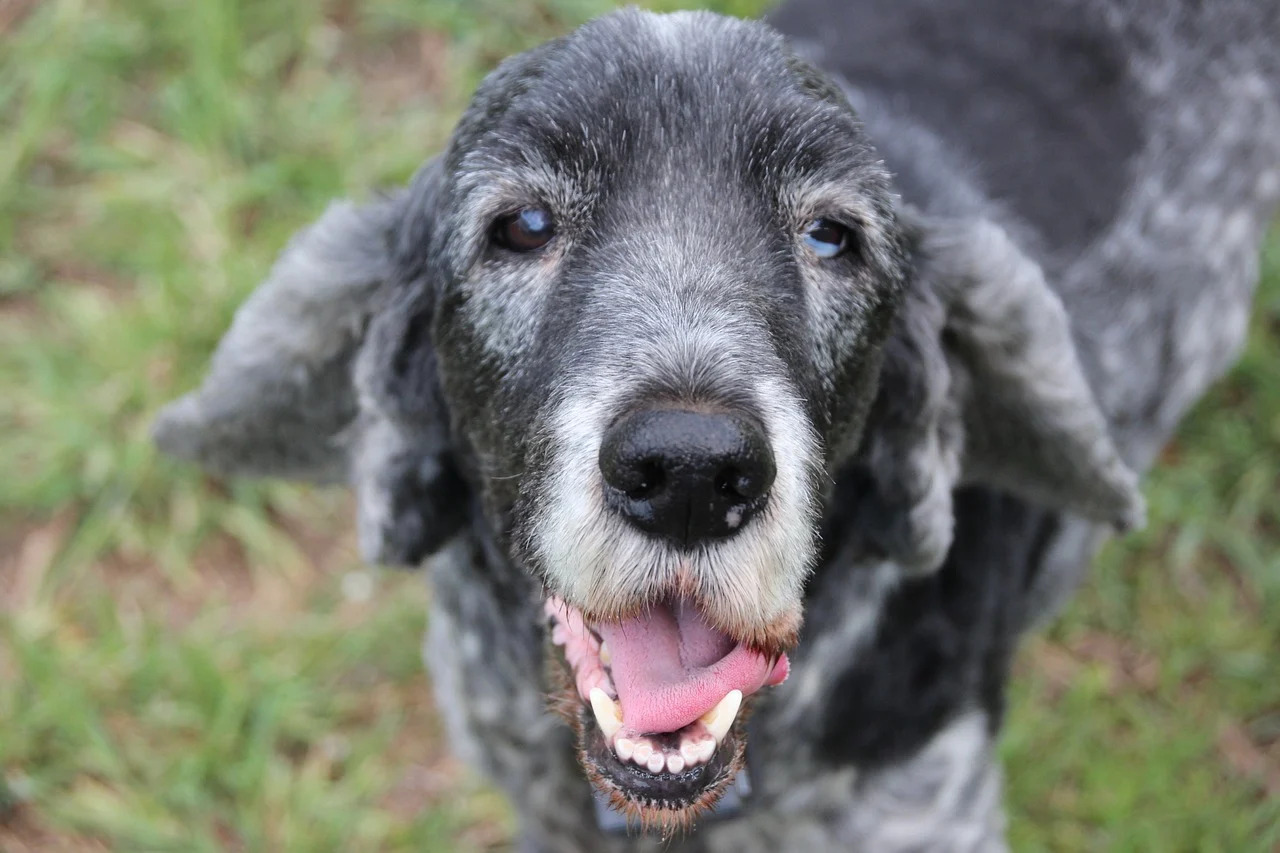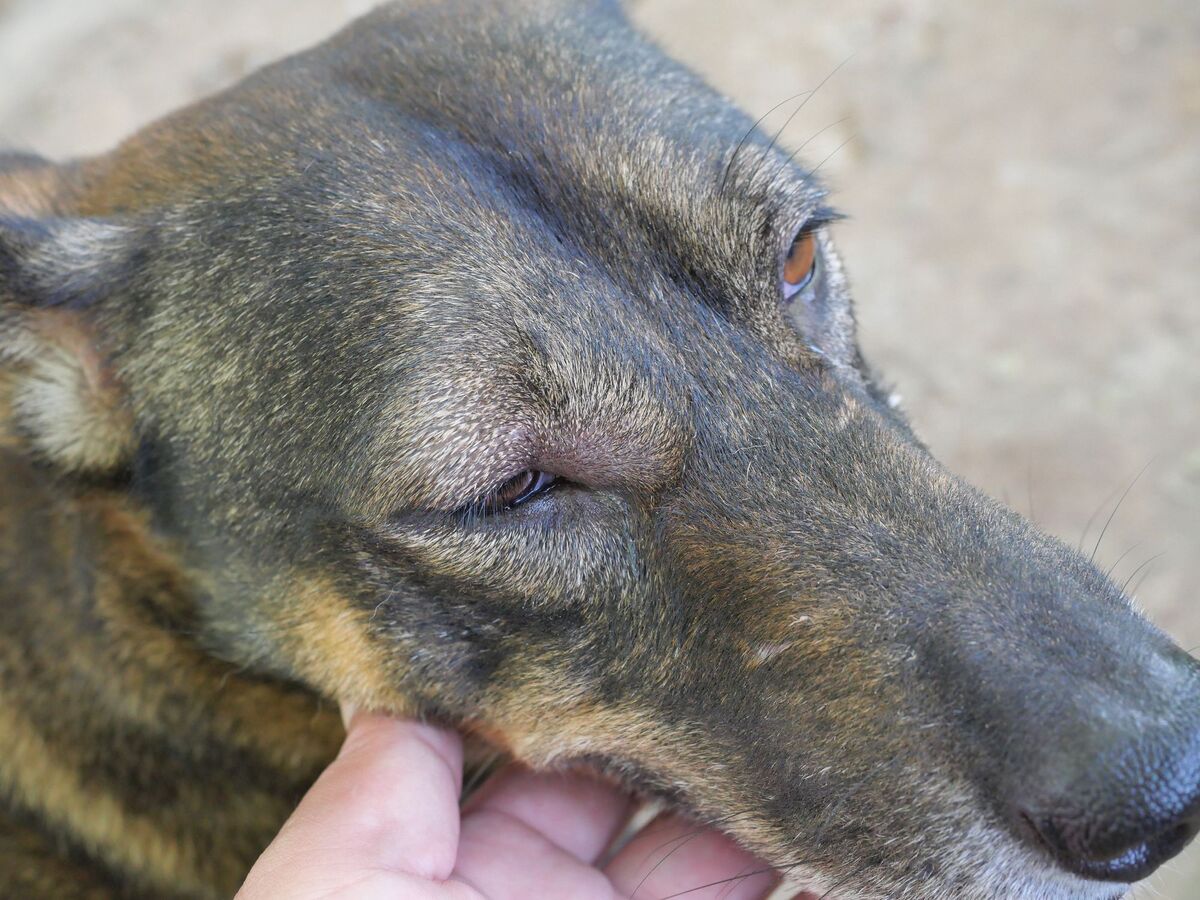Home>Health & Wellness>Behavior & Cognitive Care>Why Is My Senior Dog Breathing Fast?


Behavior & Cognitive Care
Why Is My Senior Dog Breathing Fast?
Published: February 2, 2024
Discover the reasons behind your senior dog's rapid breathing and learn how to provide the best behavior and cognitive care for your aging pet. Find expert tips and advice here.
(Many of the links in this article redirect to a specific reviewed product. Your purchase of these products through affiliate links helps to generate commission for Pawsomeoldies.com, at no extra cost. Learn more)
Table of Contents
Common Causes of Fast Breathing in Senior Dogs
Fast breathing in senior dogs can be a concerning symptom for pet owners. It's essential to understand the potential causes behind this behavior to ensure the well-being of our furry companions. Several factors can contribute to rapid breathing in senior dogs, and being aware of these common causes is crucial for early detection and intervention.
-
Respiratory Issues: Senior dogs may experience fast breathing due to respiratory problems such as chronic bronchitis, pneumonia, or other lung conditions. These issues can lead to labored breathing and increased respiratory rate, indicating the need for veterinary assessment and treatment.
-
Heart Problems: Age-related heart conditions, including congestive heart failure and arrhythmias, can result in rapid breathing in senior dogs. When the heart struggles to pump blood effectively, the body compensates by increasing the breathing rate. Monitoring for other signs of heart disease, such as coughing and exercise intolerance, is essential for identifying potential cardiac issues.
-
Pain and Discomfort: Pain or discomfort from conditions like arthritis, injuries, or internal organ problems can cause senior dogs to breathe rapidly. The body's response to pain can manifest as shallow, rapid breaths, signaling the need for pain management and supportive care.
-
Anxiety and Stress: Senior dogs may experience anxiety or stress due to changes in their environment, routine, or cognitive function. These emotional factors can lead to increased respiratory rate as the dog tries to cope with the perceived threat or discomfort.
-
Metabolic Disorders: Certain metabolic conditions, such as Cushing's disease or diabetic ketoacidosis, can contribute to fast breathing in senior dogs. These disorders affect the body's metabolic processes, leading to abnormal breathing patterns among other symptoms.
Understanding these common causes of fast breathing in senior dogs empowers pet owners to recognize potential issues early on and seek appropriate veterinary care. By staying attuned to changes in their pet's breathing patterns and overall behavior, pet owners can play a proactive role in maintaining their senior dog's health and well-being.
Read more: Why Is My Senior Dog Biting?
Respiratory Issues in Senior Dogs
Respiratory issues in senior dogs can significantly impact their overall well-being and may manifest as fast breathing, coughing, or labored breathing. As dogs age, their respiratory system may become more vulnerable to various conditions, necessitating a closer look at potential respiratory issues.
Chronic bronchitis is a common respiratory ailment in senior dogs, characterized by inflammation of the airways. This condition can lead to increased mucus production, coughing, and rapid breathing. Additionally, pneumonia, whether bacterial, viral, or fungal in origin, can affect senior dogs, causing symptoms such as fast breathing, lethargy, and loss of appetite. These respiratory infections can compromise the dog's lung function, leading to rapid breathing as the body attempts to compensate for decreased oxygen exchange.
Furthermore, senior dogs may develop age-related changes in their respiratory system, such as decreased lung elasticity and compliance. These changes can contribute to increased respiratory effort and fast breathing, especially during physical exertion or when the dog is experiencing stress.
It's crucial for pet owners to monitor their senior dogs for signs of respiratory distress, including rapid or labored breathing, wheezing, and coughing. Any deviation from normal breathing patterns should prompt a thorough veterinary evaluation to identify the underlying cause and initiate appropriate treatment.
Diagnostic procedures such as chest X-rays, blood tests, and respiratory function assessments may be necessary to pinpoint the specific respiratory issue affecting the senior dog. Treatment approaches can vary depending on the diagnosis and may include medications to alleviate inflammation, manage infections, or support respiratory function.
In addition to medical interventions, environmental modifications, such as minimizing exposure to respiratory irritants like cigarette smoke and dust, can help alleviate respiratory distress in senior dogs. Providing a well-ventilated and clean living environment can contribute to the overall respiratory health of senior canine companions.
By recognizing the potential respiratory issues that can affect senior dogs, pet owners can take proactive measures to support their pet's respiratory well-being. Early detection and intervention are vital in managing respiratory conditions, ensuring that senior dogs can continue to enjoy a high quality of life with optimal respiratory function.
Heart Problems in Senior Dogs
Heart problems are a significant concern for senior dogs, as aging can predispose them to various cardiac conditions that may impact their overall health and well-being. As dogs age, their heart muscles may undergo changes, leading to an increased risk of developing heart-related issues. Understanding the potential heart problems in senior dogs is crucial for pet owners to recognize the signs and seek timely veterinary care.
One common heart condition seen in senior dogs is congestive heart failure (CHF), which occurs when the heart is unable to effectively pump blood to meet the body's needs. This can lead to fluid accumulation in the lungs, causing symptoms such as coughing, labored breathing, and rapid breathing. Additionally, arrhythmias, or irregular heart rhythms, can manifest in senior dogs, contributing to episodes of rapid or irregular breathing patterns.
Senior dogs with underlying heart problems may exhibit signs such as exercise intolerance, weakness, and reduced tolerance for physical activity. These dogs may also experience episodes of fainting or collapse, indicating compromised cardiac function. It's essential for pet owners to monitor their senior dogs for these subtle changes in behavior and activity levels, as they can serve as early indicators of potential heart issues.
When addressing heart problems in senior dogs, veterinary evaluation is paramount. Diagnostic procedures, including echocardiography, electrocardiography, and blood tests, can aid in identifying the specific cardiac condition affecting the senior dog. These tests provide valuable insights into the structure and function of the heart, allowing for targeted treatment approaches.
Treatment for heart problems in senior dogs may involve medications to manage symptoms, improve cardiac function, and reduce fluid retention. Additionally, dietary modifications, such as incorporating heart-healthy nutrients and managing sodium intake, can support the overall cardiac health of senior dogs. Pet owners play a crucial role in administering medications as prescribed and monitoring their senior dogs for any changes in their condition.
Furthermore, creating a low-stress environment and minimizing factors that can exacerbate heart issues, such as extreme heat or excessive physical exertion, can contribute to the well-being of senior dogs with heart problems. Regular veterinary check-ups and ongoing monitoring are essential to assess the progression of the cardiac condition and adjust treatment strategies as needed.
By recognizing the potential heart problems that can affect senior dogs and being proactive in seeking veterinary care, pet owners can optimize the quality of life for their aging canine companions. Early detection and comprehensive management of heart issues are vital in ensuring that senior dogs can continue to enjoy a fulfilling and comfortable life despite cardiac challenges.
Pain and Discomfort in Senior Dogs
Pain and discomfort are significant concerns for senior dogs, as age-related changes and underlying health conditions can predispose them to various sources of physical discomfort. Identifying and addressing pain in senior dogs is crucial for ensuring their overall well-being and quality of life.
Senior dogs may experience pain from a variety of sources, including arthritis, orthopedic issues, dental problems, and internal organ abnormalities. Arthritis, a common condition in aging dogs, can lead to joint pain and stiffness, causing them to exhibit signs of discomfort such as reluctance to move, difficulty rising, and changes in gait. Additionally, orthopedic issues such as degenerative joint disease and spinal disorders can contribute to chronic pain in senior dogs, impacting their mobility and comfort.
Dental problems, such as periodontal disease and tooth decay, can also cause significant discomfort for senior dogs. Oral pain can lead to changes in eating habits, drooling, and reluctance to chew, affecting their nutritional intake and overall well-being. Furthermore, internal organ abnormalities, including kidney disease, liver conditions, and gastrointestinal issues, can manifest as abdominal discomfort and generalized malaise in senior dogs.
Recognizing signs of pain in senior dogs is essential for pet owners to intervene and alleviate their discomfort. Changes in behavior, such as increased restlessness, vocalization, and aggression, can indicate that a senior dog is experiencing pain. Additionally, alterations in posture, reluctance to engage in physical activities, and changes in appetite can serve as indicators of underlying discomfort.
When addressing pain and discomfort in senior dogs, veterinary assessment is crucial to identify the source and severity of the pain. Diagnostic procedures, including physical examinations, imaging studies, and laboratory tests, can aid in pinpointing the underlying cause of pain and formulating an appropriate treatment plan.
Treatment approaches for pain management in senior dogs may include medications to alleviate pain and inflammation, physical therapy to improve mobility and comfort, and dietary modifications to support joint health and overall well-being. Additionally, creating a comfortable and supportive environment for senior dogs, including providing orthopedic bedding and minimizing environmental stressors, can contribute to their overall comfort and quality of life.
By recognizing and addressing pain and discomfort in senior dogs, pet owners can play a proactive role in ensuring the well-being of their aging canine companions. Early intervention and comprehensive pain management strategies are essential in promoting the comfort and happiness of senior dogs as they navigate the challenges associated with aging and age-related health conditions.
Anxiety and Stress in Senior Dogs
Anxiety and stress can significantly impact the well-being of senior dogs, often stemming from various environmental, situational, or cognitive factors. As dogs age, they may become more susceptible to anxiety and stress due to changes in their routine, physical health, or cognitive function. Understanding the potential triggers and manifestations of anxiety and stress in senior dogs is essential for pet owners to provide the necessary support and intervention.
Senior dogs may experience anxiety and stress in response to changes in their environment, such as moving to a new home, encountering unfamiliar surroundings, or experiencing disruptions in their daily routine. These environmental stressors can evoke feelings of unease and apprehension in senior dogs, leading to behavioral changes and physiological responses indicative of anxiety.
Furthermore, cognitive changes associated with aging, such as cognitive dysfunction syndrome (CDS), can contribute to anxiety and stress in senior dogs. Cognitive decline may lead to disorientation, confusion, and heightened sensitivity to stimuli, causing senior dogs to exhibit signs of distress and anxiety. Additionally, age-related sensory changes, including diminished hearing and vision, can amplify feelings of vulnerability and anxiety in senior dogs, impacting their overall emotional well-being.
The manifestations of anxiety and stress in senior dogs can vary, encompassing behavioral, physical, and emotional indicators. Senior dogs may display restlessness, pacing, excessive vocalization, or clinginess as behavioral responses to anxiety. Physiologically, increased respiratory rate, trembling, and gastrointestinal disturbances can accompany feelings of stress and anxiety in senior dogs. Emotionally, senior dogs may exhibit signs of withdrawal, decreased interest in activities, and altered sleep patterns as a result of underlying anxiety and stress.
Addressing anxiety and stress in senior dogs requires a multifaceted approach that encompasses environmental management, behavioral interventions, and supportive care. Creating a predictable and comforting environment for senior dogs, maintaining consistent routines, and minimizing exposure to stress-inducing stimuli can help alleviate feelings of anxiety and stress. Additionally, providing mental stimulation, interactive play, and positive reinforcement can contribute to emotional well-being and resilience in senior dogs.
Veterinary guidance is invaluable in addressing anxiety and stress in senior dogs, as it allows for comprehensive assessment and tailored intervention strategies. Veterinarians can offer behavioral modification techniques, recommend pheromone-based calming aids, and, if necessary, prescribe medications to manage anxiety in senior dogs. Furthermore, supportive care and nurturing interactions from pet owners play a pivotal role in alleviating anxiety and stress, fostering a sense of security and comfort for senior dogs.
By recognizing the potential triggers and manifestations of anxiety and stress in senior dogs, pet owners can proactively support the emotional well-being of their aging canine companions. Creating a nurturing and reassuring environment, coupled with veterinary guidance and compassionate care, can help senior dogs navigate anxiety and stress, promoting their overall emotional resilience and quality of life.
Read more: Why Does My Senior Dog Keep Whining?
When to Seek Veterinary Care for Fast Breathing
Recognizing the appropriate timing to seek veterinary care for a senior dog exhibiting fast breathing is crucial for ensuring timely intervention and comprehensive assessment of their health status. While occasional instances of transient rapid breathing may not always warrant immediate concern, persistent or unexplained fast breathing in senior dogs should prompt pet owners to seek veterinary attention without delay.
When a senior dog's fast breathing is accompanied by additional concerning symptoms such as coughing, wheezing, lethargy, or bluish discoloration of the gums or tongue, it signifies the need for urgent veterinary evaluation. These concurrent signs may indicate underlying respiratory distress, cardiac issues, or systemic abnormalities that require prompt diagnosis and intervention.
Furthermore, if a senior dog's fast breathing persists during periods of rest or low activity, it suggests a potential underlying health issue that necessitates veterinary assessment. Changes in the dog's breathing pattern, such as shallow or labored breaths, should also prompt pet owners to seek veterinary care to rule out respiratory or cardiac conditions contributing to the altered breathing behavior.
In cases where a senior dog's fast breathing is linked to a known medical condition such as heart disease, respiratory ailment, or chronic pain, any exacerbation or sudden escalation of the rapid breathing warrants immediate veterinary attention. These exacerbations may signify disease progression, acute complications, or the need for adjustments in the dog's treatment plan to effectively manage the underlying condition.
Additionally, if a senior dog's fast breathing is accompanied by signs of distress, anxiety, or an inability to find relief, it indicates the need for veterinary assessment to address potential emotional or cognitive factors contributing to the rapid breathing. Senior dogs experiencing anxiety-induced rapid breathing may benefit from behavioral interventions and supportive care to alleviate their emotional distress and promote a sense of calm and security.
Ultimately, pet owners should trust their instincts and seek veterinary care if they observe any concerning changes in their senior dog's breathing patterns. Early veterinary intervention can facilitate timely diagnosis, targeted treatment, and supportive care, ensuring the optimal management of any underlying health issues contributing to fast breathing in senior dogs. By prioritizing proactive veterinary care, pet owners can safeguard the well-being and comfort of their aging canine companions, promoting a fulfilling and healthy senior life stage.

